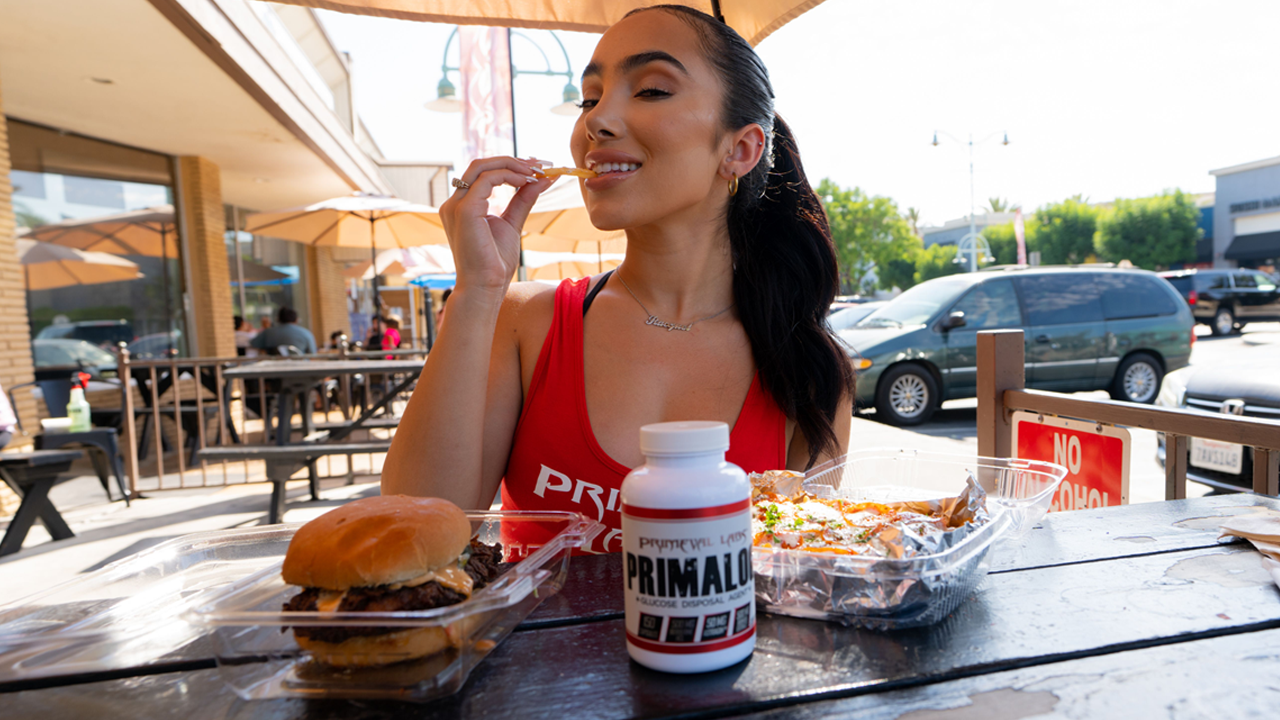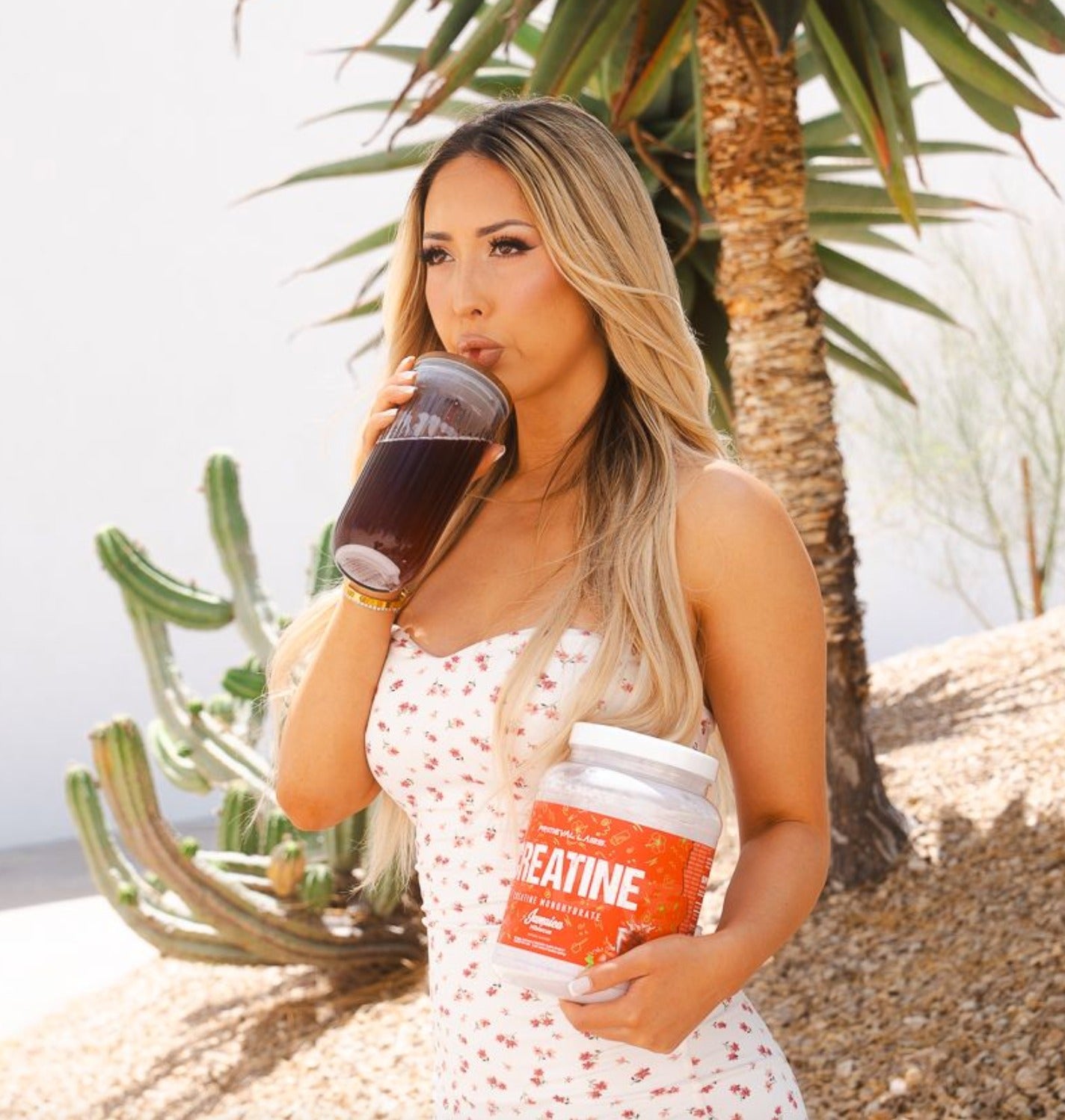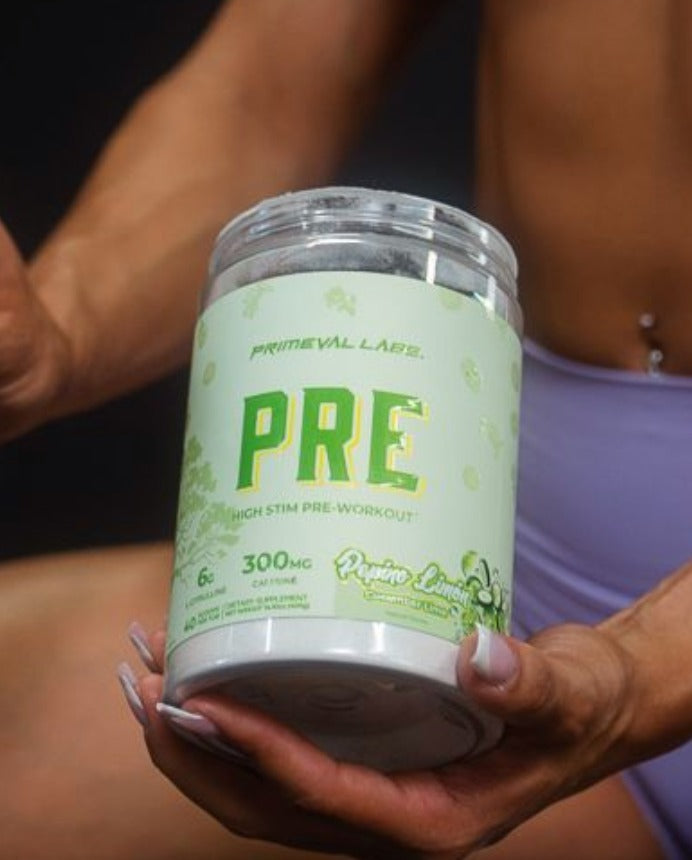Carbohydrates have gotten a bad rap in recent years, and are often blamed for the ever-increasing rates of chronic lifestyle diseases, including obesity, type 2 diabetes, and metabolic syndrome.
The reality is that carbohydrates are the primary (and preferred) source of energy for our cells, and they’re absolutely essential for maintaining high levels of performance during intense physical activity.
Still, many individuals are weary about consuming carbohydrates for fear that they will spike insulin levels and promote fat storage.
This is where glucose utilization aids may be helpful.
Glucose utilization aids (aka glucose disposal agents) support carbohydrate metabolism and storage, insulin sensitivity, and healthy blood sugar levels.
Primalog is Primeval Labs’ take on glucose utilization aids and is formulated to support improved carbohydrate utilization and storage with the end goal being greater performance, recovery, and growth.
Let’s get started by answering some of the most frequently asked questions about Primalog.
Frequently Asked Questions
I like to eat a cheat meal a couple times a week, can I use Primalog with my cheat meals?
Yes, you can take a serving of Primalog before a cheat meal (provided that the cheat meal is high in carbohydrates, which they usually are).
I have carbs every day, how many times can I use Primalog daily?
Only one full serving of Primalog should be consumed daily.
If having multiple carb-containing meals throughout the day, take your serving of Primalog before the meal with the highest amount of carbs.
Alternatively, you may divide your dose of Primalog across your two highest carbohydrate-containing meals.
Is Primalog ok to take with my pre workout meal that has carbs?
Yes, it is ok to take your serving of Primalog with your pre workout meal.
Would Primalog be good to use with a meal that has 50 or more carbs?
Yes.
Due to the potency of the ingredients in Primalog, it is recommended that meals contain a minimum of 50 grams of carbohydrates.
If consuming a meal with less than 50 grams of carbohydrates, a half dose (2-3 caps) may be consumed.
What’s in Primalog?
Chromium (200mcg)
Chromium is a trace mineral required for a vast array of biological functions, including cholesterol synthesis and insulin metabolism.[1,2]
Research notes an association between individuals with type 2 diabetes having lower levels of chromium than those without the disease.[1,2]
Without sufficient chromium, insulin metabolism suffers as does the ability to efficiently uptake and utilize glucose, amino acids, and fats, which may result in delayed muscle recovery and growth.
Primalog contains 200mcg chromium per full serving from chromium nicotinate glycinate chelate which is noted to be significantly more bioactive than other types of chromium.[3]
Gymnema Sylvestre (1000mg)
Gymnema Sylvestre is a herb native to India and Sri Lanka that has a long history of use in eastern medicine for supporting insulin function and lowering diabetes risk.[5]
Better insulin function supports stable blood sugar levels, and helps shuttle glucose into skeletal muscles where it can then be used to support energy production, glycogen replenishment, and athletic performance.
A comprehensive literature review of gymnema sylvestre noted that it may also help reduce plasma glucose levels, leptin levels, body weight and even BMI (body mass index).[6]
Banaba Extract (500mg)
Banaba (Lagerstroemia) is another plant renowned for its antidiabetic actions.
The leaves of the banaba plant are rich in corosolic acid, a bioactive compound which is believed to induce GLUT4 translocation and, as a result, support better glucose control.[7,8]
GLUT4 is the insulin-responsive glucose transporter gene in the body, and studies indicate that a malfunctioning GLUT4 gene may lead to insulin resistance in skeletal muscle as well as diabetes.[9]
Research also indicates that corosolic acid supports glycolysis, glucose transport, and insulin sensitivity, which aids glucose control and utilization.[10,12,13,14]
Banaba may also benefit weight loss too as it has been shown to inhibit the pancreatic lipase enzyme (the enzyme responsible for fat absorption).[11]
Berberine HCl (500mg)
Berberine is a mighty impressive bioactive compound noted to possess a wide range of beneficial properties, especially regarding inflammation, weight loss, and diabetes.
In particular, berberine has been noted to enhance glucose uptake into skeletal muscle via AMPK activation.[15,16]
AMPK is a “master energy regulator” in the body, and activation of AMPK has been shown to increase mitochondrial biogenesis in skeletal muscle cells, reduce fat storage, and improve insulin sensitivity.[17,18,19]
Some particularly fascinating research finds that berberine may be able to stimulate glucose uptake into muscle cells even if the cell happens to be insulin resistant.[20]
Cinnamon (125mg)
Cinnamon is a well-known cooking/baking spice and popular supplement for individuals seeking to improve blood glucose regulation.
Research indicates that cinnamon consumption may help reduce the rate at which glucose enters the body as well as improve glucose utilization within cells.[21]
Additional studies suggest that cinnamon may help reduce blood sugar spikes, glucose levels and cholesterol levels in Type 2 Diabetics.[22]
Cinnamon has been shown to increase in vitro glucose uptake and glycogen synthesis.
To top it off, assorted phenolic compounds naturally occurring in cinnamon, such as epicatechin, catechin, and procyanidin have been noted to inhibit the formation of advanced glycation end products.[21]
R-ALA (100mg)
Alpha Lipoic Acid (ALA) is a fatty acid that is endogenously produced and found within the mitochondria of every cell in the body. In addition to supporting energy metabolism, ALA also serves as a powerful antioxidant.
Research notes that ALA may help lower fasting blood sugar, suppress appetite, and increase energy expenditure.[23,24,25]
AstraGin (50mg)
AstraGin is a patented blend of highly purified saponins isolated from the Astragalus membranaceous and Panax notoginseng plant.
Various studies have shown that AstraGin may significantly increase the absorption of various nutrients, including:
- Amino acids
- Vitamins
- Minerals
- Phytonutrients, and
- Other dietary supplements
AstraGin enhances ingredient absorption by upregulating the absorption-specific mRNA and transporters, such as SGLT1, CAT1, and GLUT4.
AstraGin also supports a healthy gut by repairing damaged intestinal walls and reducing intestinal submucosa inflammation.[26]
SUGGESTED USE
Consume 5 capsules of Primalog with 12 ounces of water alongside a high-carbohydrate meal.
References
- A scientific review: the role of chromium in insulin resistance. Diabetes Educ. 2004;Suppl:2-14.
- Hua Y, Clark S, Ren J, Sreejayan N. Molecular Mechanisms of Chromium in Alleviating Insulin Resistance. The Journal of Nutritional Biochemistry. 2012;23(4):313-319. doi:10.1016/j.jnutbio.2011.11.001.
- Juan A. Cooper, Bryan F. Anderson, Paul D. Buckley, Leonard F. Blackwell; Structure and biological activity of nitrogen and oxygen coordinated nicotinic acid complexes of chromium; Inorganica Chimica Acta; Volume 91, Issue 1, January 1984, Pages 1–9
- K. L. Olin, D. M. Stearns, W. H. Armstrong, C. L. Keen; Comparative retention/absorption of 51chromium (51Cr) from 51Cr chloride, 51Cr nicotinate and 51Cr picolinate in a rat model; Trace Elements and Electrolytes; 1994; 182-186;
- Kanetkar P, Singhal R, Kamat M. Gymnema sylvestre: A Memoir. Journal of Clinical Biochemistry and Nutrition. 2007;41(2):77-81. doi:10.3164/jcbn.2007010.
- Pothuraju, R., Sharma, R. K., Chagalamarri, J., Jangra, S. and Kumar Kavadi, P. (2014), A systematic review of Gymnema sylvestre in obesity and diabetes management. J. Sci. Food Agric., 94: 834–840. doi: 10.1002/jsfa.6458.
- Miura T, Itoh Y, Kaneko T, et al. Corosolic acid induces GLUT4 translocation in genetically type 2 diabetic mice. Biol Pharm Bull. 2004;27(7):1103-1105.
- Stenbit AE, Tsao T-S, Li J, et al. GLUT4 heterozygous knockout mice develop muscle insulin resistance and diabetes. Nat Med. 1997;3:1096. http://dx.doi.org/10.1038/nm1097-1096.
- Pei Z, Liu G, Lubben TH, Szczepankiewicz BG. Inhibition of protein tyrosine phosphatase 1B as a potential treatment of diabetes and obesity. Curr Pharm Des. 2004;10(28):3481-3504.
- Zhang Z-Y, Lee S-Y. PTP1B inhibitors as potential therapeutics in the treatment of Type 2 diabetes and obesity. Expert Opin Investig Drugs. 2003;12(2):223-233. doi:10.1517/13543784.12.2.223.
- Yamada K, Hosokawa M, Fujimoto S, et al. Effect of corosolic acid on gluconeogenesis in rat liver. Diabetes Res Clin Pract. 2008;80(1):48-55. doi:https://doi.org/10.1016/j.diabres.2007.11.011.
- Takagi S, et al; Effect of corosolic acid on dietary hypercholesterolemia and hepatic steatosis in KK-Ay diabetic mice . Biomed Res. (2010)
- Miura T, Takagi S, Ishida T; Management of Diabetes and Its Complications with Banaba (Lagerstroemia speciosa L.) and Corosolic Acid . Evid Based Complement Alternat Med. (2012)
- Judy WV, et al; Antidiabetic activity of a standardized extract (Glucosol) from Lagerstroemia speciosa leaves in Type II diabetics. A dose-dependence study . J Ethnopharmacol. (2003)
- Yin J, Xing H, Ye J. Efficacy of Berberine in Patients with Type 2 Diabetes. Metabolism: clinical and experimental. 2008;57(5):712-717. doi:10.1016/j.metabol.2008.01.013.
- Lin W, Huang X, Zhang L, Chen D, Wang D, Peng Q, et al. (2012) BMS309403 Stimulates Glucose Uptake in Myotubes through Activation of AMP-Activated Protein Kinase. PLoS ONE7(8): e44570. https://doi.org/10.1371/journal.pone.0044570
- Dong H, Wang N, Zhao L, Lu F. Berberine in the Treatment of Type 2 Diabetes Mellitus: A Systemic Review and Meta-Analysis. Evidence-based Complementary and Alternative Medicine : eCAM. 2012;2012:591654. doi:10.1155/2012/591654.
- Godugu C, Patel AR, Doddapaneni R, Somagoni J, Singh M (2014) Approaches to Improve the Oral Bioavailability and Effects of Novel Anticancer Drugs Berberine and Betulinic Acid. PLoS ONE 9(3): e89919. https://doi.org/10.1371/journal.pone.0089919.
- Bustanji Y, Taha MO, Yousef A-M, Al-Bakri AG. Berberine potently inhibits protein tyrosine phosphatase 1B: investigation by docking simulation and experimental validation. J Enzyme Inhib Med Chem. 2006;21(2):163-171. doi:10.1080/14756360500533026.
- Liu L-Z, Cheung SCK, Lan L-L, et al. Berberine modulates insulin signaling transduction in insulin-resistant cells. Mol Cell Endocrinol. 2010;317(1-2):148-153. doi:10.1016/j.mce.2009.12.027.
- Qin B, Panickar KS, Anderson RA. Cinnamon: potential role in the prevention of insulin resistance, metabolic syndrome, and type 2 diabetes. J Diabetes Sci Technol. 2010;4(3):685-693. Published 2010 May 1. doi:10.1177/193229681000400324
- Khan, A., Safdar, M., Ali Khan, M. M., Khattak, K. N., & Anderson, R. A. (2003). Cinnamon Improves Glucose and Lipids of People With Type 2 Diabetes. Diabetes Care, 26(12), 3215 LP – 3218. https://doi.org/10.2337/diacare.26.12.3215
- Ansar H, Mazloom Z, Kazemi F, Hejazi N. Effect of alpha-lipoic acid on blood glucose, insulin resistance and glutathione peroxidase of type 2 diabetic patients. Saudi Med J. 2011;32(6):584-588.
- Kim MS, et al; Anti-obesity effects of alpha-lipoic acid mediated by suppression of hypothalamic AMP-activated protein kinase . Nat Med. (2004)
- Cheng PY, et al; Reciprocal effects of α-lipoic acid on adenosine monophosphate-activated protein kinase activity in obesity induced by ovariectomy in rats . Menopause. (2011)
- https://nulivscience.com/ingredients/astragin














Leave a comment
This site is protected by hCaptcha and the hCaptcha Privacy Policy and Terms of Service apply.